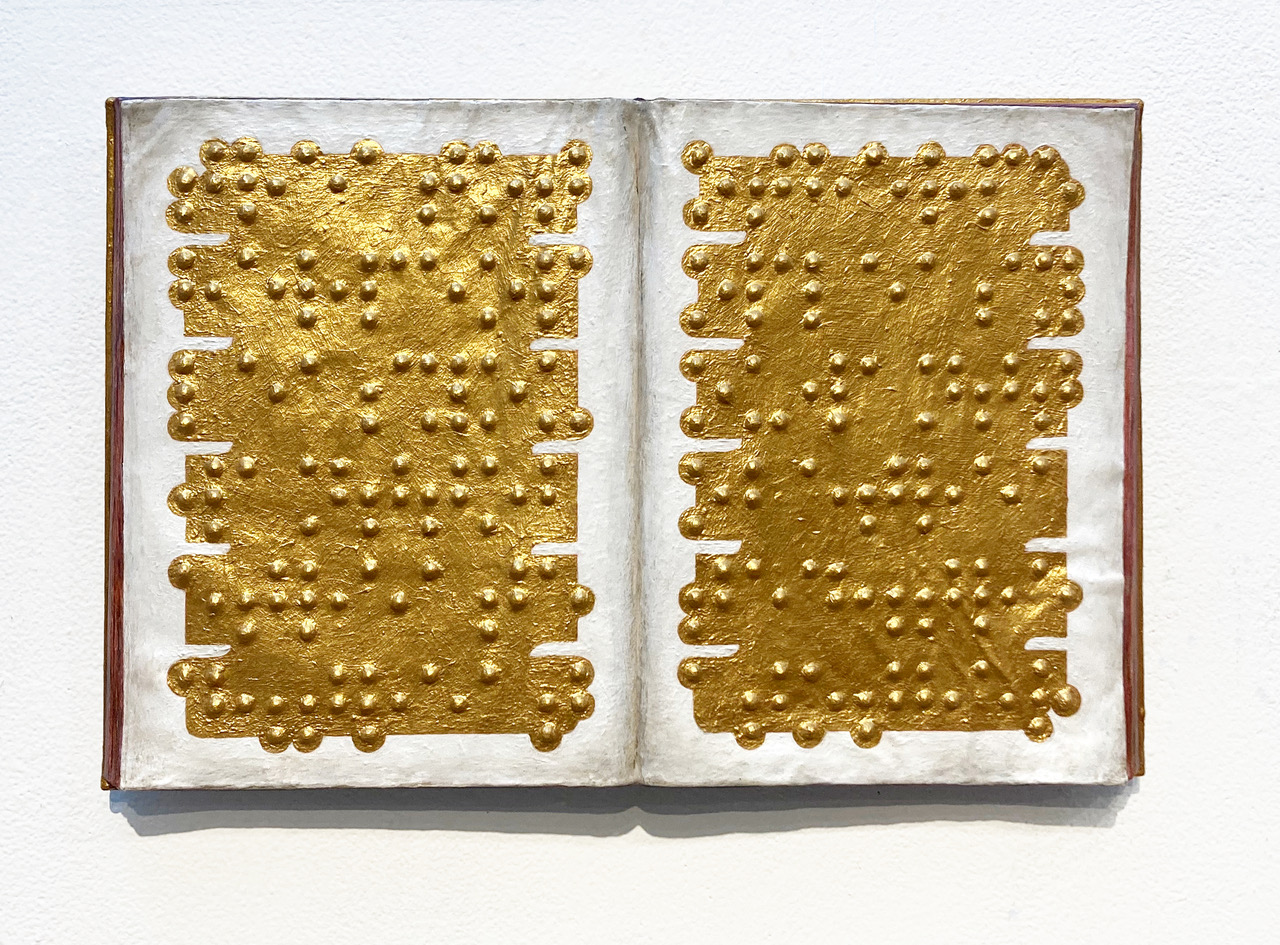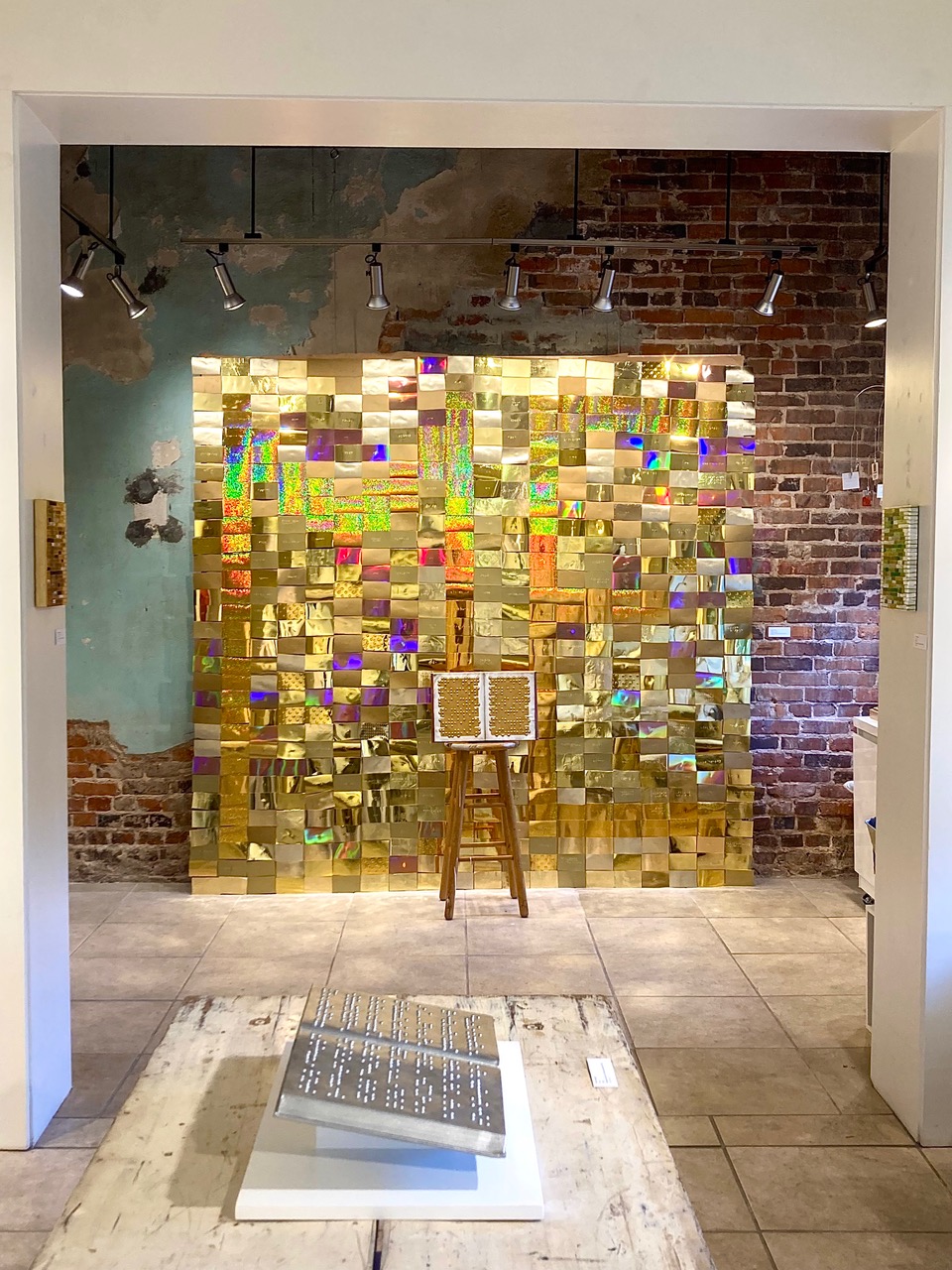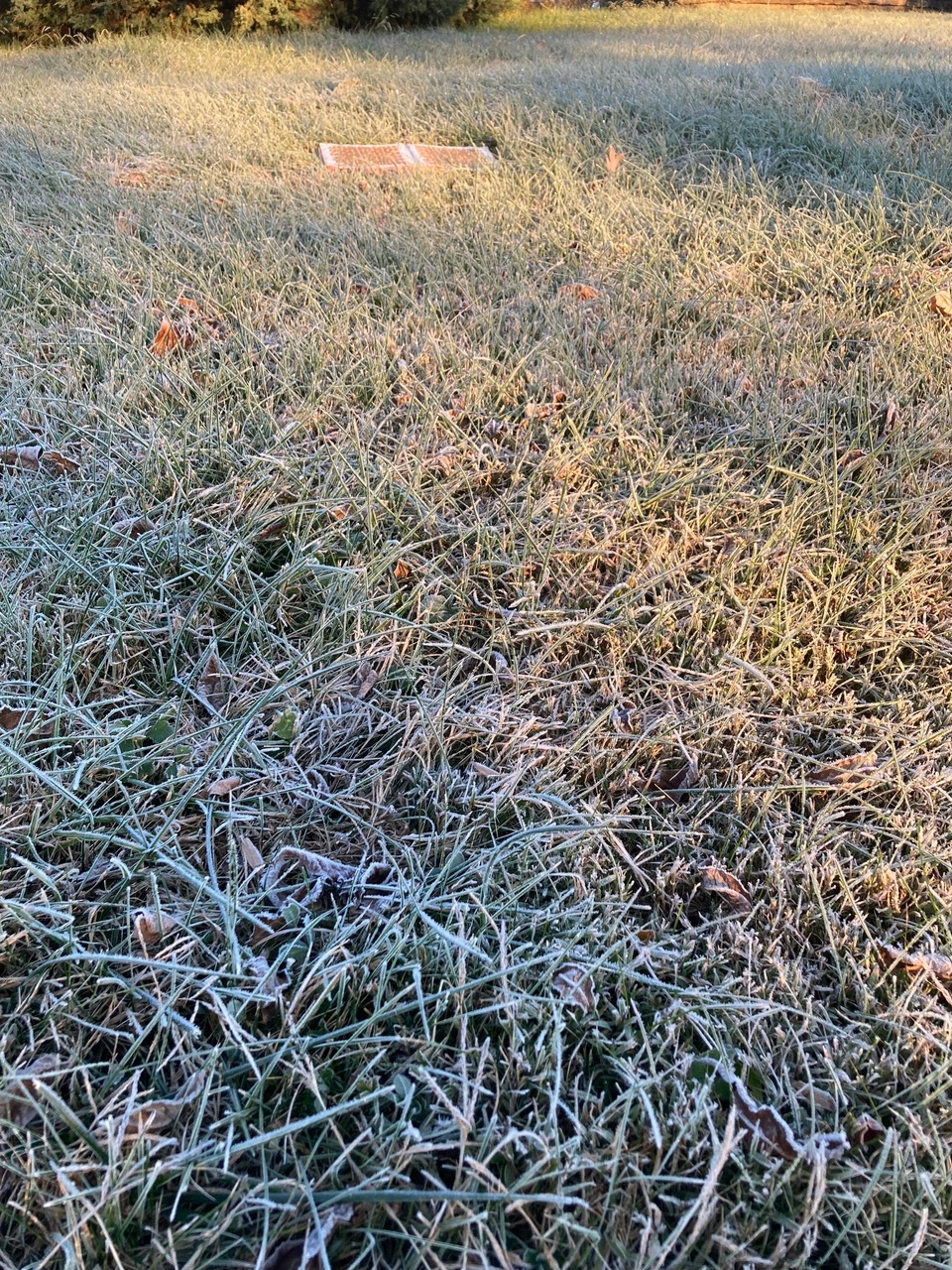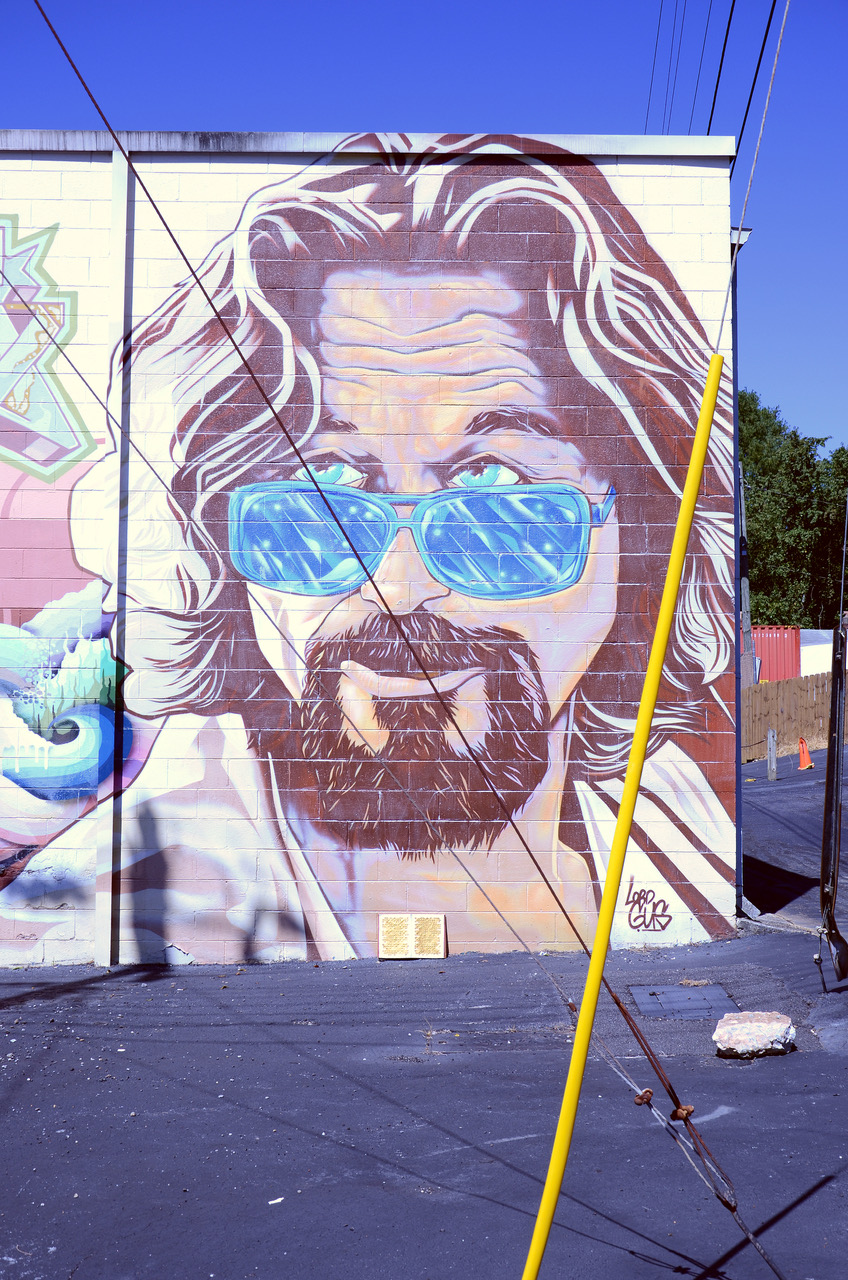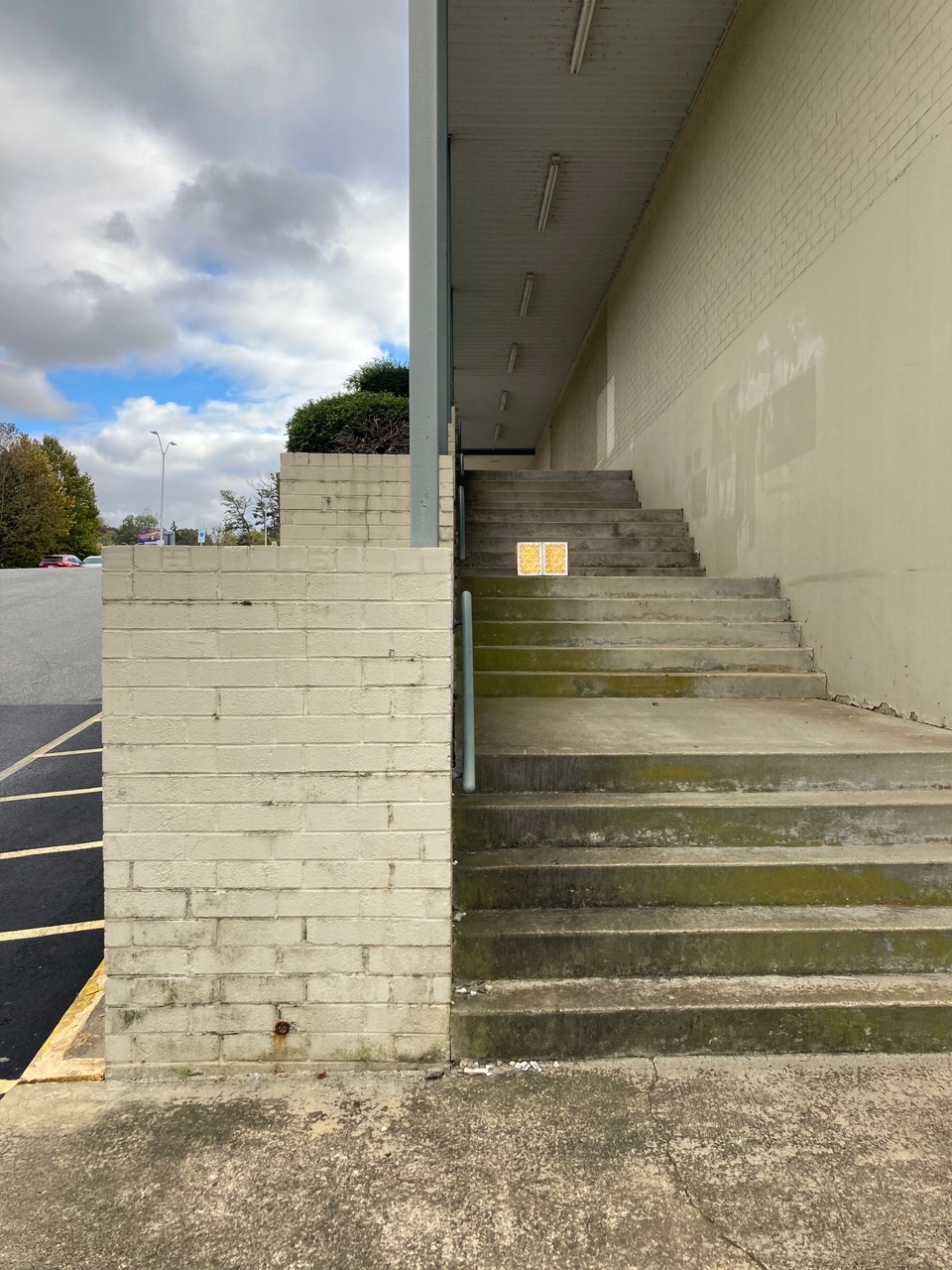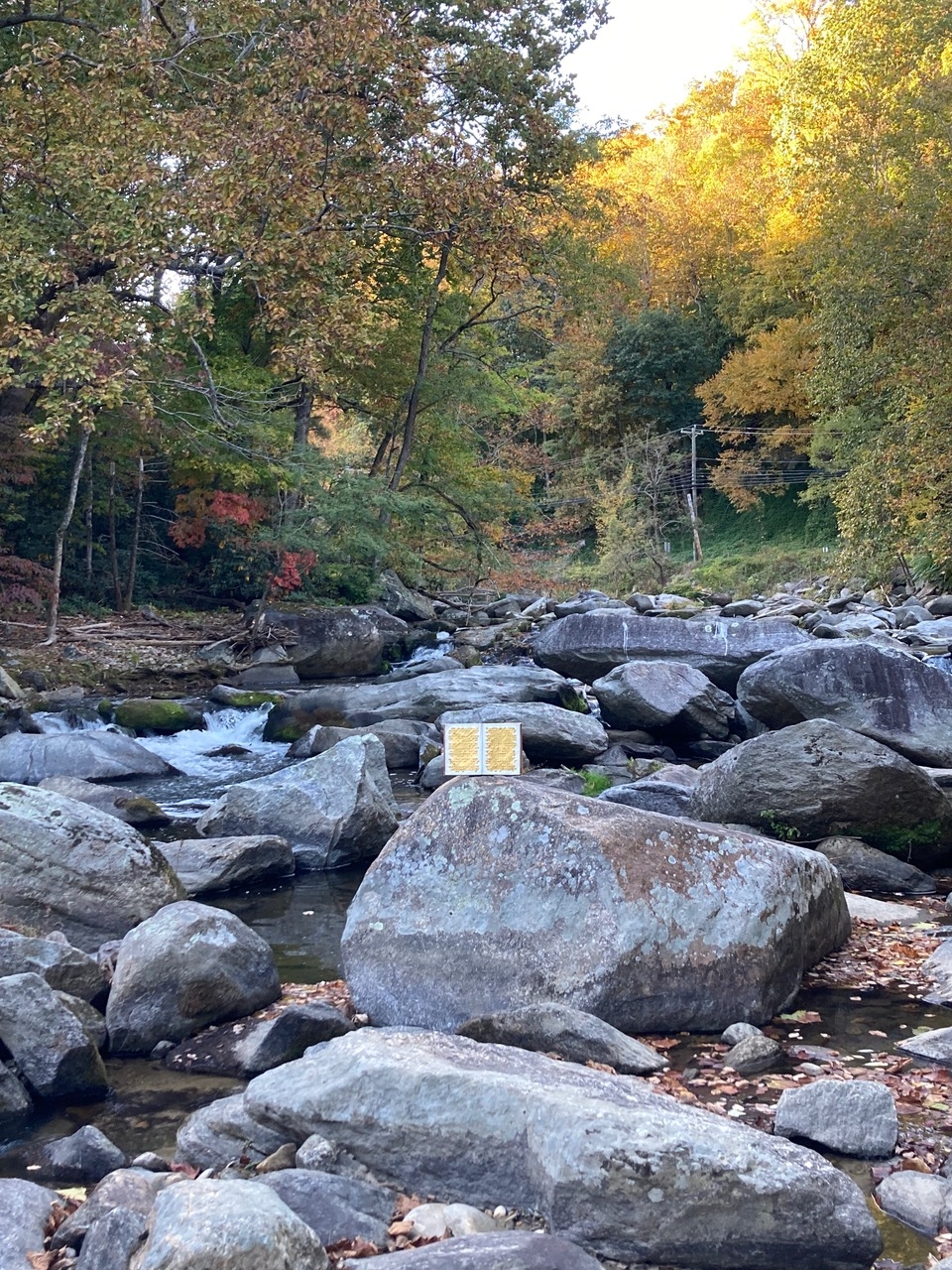Art has an interesting power to define experiences by the juxtaposition of observer and the observed. But, what happens when you take such a well-known object like a book, and use it in a new way? Surprisingly, this can have the profound affect to undefine it, and leave us simply with all that is.
CONVERSATION.14
Good morning, Kenn. You have an intriguing, new project utilizing one of your illuminated manuscripts. Talk to us about your latest illuminated manuscript project, “iM365.”
K: The iM365 is a project that will occur daily, over a full year, in one moment that lasts 365 seconds (6 minutes, 5 seconds). Every day, wherever I happen to be, I place it in a location that feels right. It might be a public place, or out in the middle of the woods.
iM365
2022-ongoing, acrylic on repurposed book, 11.75x18x.5 inches
Is there a specified time that you stop and do this?
K: It depends, sometimes early in the morning, sometimes later in the day. It’s an interesting parameter for the project. I have 24 hours to do this meditation. If I wait too long towards the end of the day, I might find myself hurrying to find a spot to catch the last remaining sunlight. Although, iM365 can also happen at night. I find myself asking, “When is that perfect moment?” This raises the awareness that we can’t be perfect all the time. But, we can still be kind.
This is why I chose the book as the focus for this project. The Christian missionaries travelled Europe with the illuminated manuscripts back in Medieval times. They were spreading the word, trying to convert people to their religion. I look at this iM365 book as spreading the word, or the Golden Rule. But, my Golden Rule is from the Humanist sector. It includes everyone.
Every major faith has some resemblance of language that leads to the Golden Rule to “treat others as you want to be treated.” I didn’t want it to be particular to any one faith, because I wanted it to be all-inclusive.
Is the Braille inscribed on your book the Golden Rule?
K: Yes.
Can you elaborate on what you mean by the Humanist Golden Rule?
K: Humanists are not religious, but they believe that we can treat everyone on a humanitarian level. I like that idea where it doesn’t matter what your race, gender, or belief system is. We can still have a conversation to understand each other and resolve conflicts on a universal level.
Did someone write a Humanist Golden Rule?
K: I think it’s more of a broad idea. I didn’t feel it necessary to dive into it too deeply. As the existentialists say, I was thrown into a Christian Catholic family. I grew up learning the tenants of Catholicism, and I realized that wasn’t for me. The idea of respecting people, being respectful and being responsible which I learned as a child, still holds true. It’s just not in that Catholic faith. I think of myself more as a humanist.
So, the book travels with me everywhere. I put it out for 365 seconds and set a timer. I capture an image each time and I am archiving them. I number them in sequence, and record the location (state and city). Oftentimes I create notes during that time. I also post the images and location daily on social media (Facebook, Instagram, and Twitter).
Did you choose a specific day to start this project?
K: I did. I chose to start on the fall equinox, September 23rd. I like the idea of beginnings and endings, or a cyclical idea of time. It so happened that it coincided with my exhibition in Ruston which opened October 1st. The seasonal aspect was perfect metaphorically to the chapters in our lives. It also captured the idea of change: from physical change like hot and cold, to how our emotions constantly change: happy, sorrowful, … cranky. {laughs}
Is your book always placed outside?
K: No. Only one so far has been inside. As I was installing the exhibition in Ruston, I was actually running out of time. I didn’t want to hurry somewhere. I positioned it in front of the “believe me” gold piece, which is all about Trump’s negative words, so I thought how apropos to put this book in front of it. I did the Trump piece with his words in gold, and now it seems like it has run its course. Trump is never going to change. But, I can change. We can change. So that’s what this iM365 piece is all about.
iM365.009.la.rstn (ruston)
K: The “iM” is almost like the contraction “I’m.” And then the lower case “i” stands for that ubiquitous, consumerist icon: iPhone, etc., and the huge impact the Apple’s designs have had on our society. Sitting with this book every day for 6 minutes and 5 seconds is having an interesting on my view point, personally. This practice makes me stop. It makes me pause. In our busy everyday lives, we don’t tend to do this. Our lives are full of distractions.
It doesn’t surprise me that you are noticing change. You are not just documenting the book. You are documenting your spot in time: how are you feeling, all these different times of day, these different places – your spectrum of experience.
K: So today as we are speaking, is day 28. Every day has been different. But, through the course of the year, I’m sure days will begin to feel similar.
Right now because there have been so few, you are very aware of each 365 seconds, but eventually, as the days add up, hindsight will give you new information.
K: Living in the present, you let go of the past, but this project will create memories that I can still go back to.
I wonder what the 365th day will look like.
K: I think it will be momentous. But, at the same time, I am not looking so far ahead. This project has brought me into the day to day. How many times in this society do we talk about living in the present moment? This has created a way for me to check that – every single day.
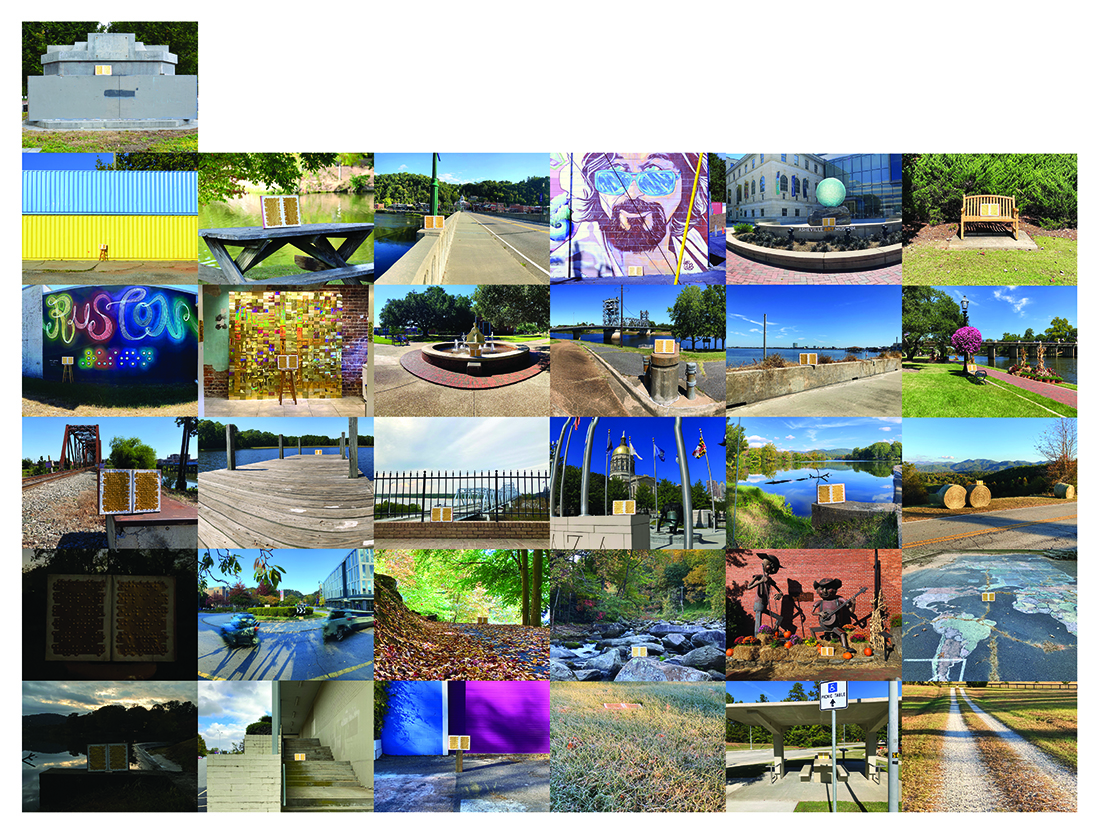 31 days – month 01
31 days – month 01
I think of the missionaries traveling with their elaborate books, sometimes in a protective, locked case. Then, I see the images you are posting, and sometimes the book is sitting in the woods, or lying on the ground. How is the book changing: has it become wet from rain, dirty from the ground, or worn from everyday exposure to the elements? Because, it has to sit there regardless of the weather, right?
iM365.029.nc.mars (mars hill)
K: Yes. The funny thing is, so far these 31 days, we’ve had perfect weather – barely a drop of rain – all the way from here to Louisiana. Now, a few days ago I posted early in the morning. It was slightly raining. And, I’m okay with that. I’m actually looking forward to a rainy day, a snowy day. Because, once again, how do we maintain a standard of respect and responsibility on those crappy days? We need rain. Our earth, here, right now, is drying up. So, all these issues come into play as I am observing each day.
Also, think of how many protective measures you have in place for transporting art from your studio to galleries to ensure it remains in the same condition. You’ve been a working artist for many years. Your protocol for this must be pretty engrained. This project turns that upside down. I wonder how it will feel to you to observe something you have made just sitting in the rain.
K: That’s a good question. This brings up the idea of preciousness: the value that we place on a finished art piece. Now, during the process of its creation, I am not concerned with that because I am looking toward its completion. But once it’s finished, I handle it as if it is gold or nitroglycerin. I can’t get it dirty, because in order for a patron to want to purchase it, it must be in perfect condition.
With iM365, all of these protocols do not apply. I do keep it in a cloth bag while transporting, but once I find a location, handling the book and allowing whatever environmental conditions that are present during the 365 seconds to occur, are part of the process. It still has a value, but I don’t baby it.
I have heard in a meditation teaching before two things that you are touching upon here: the first, is that we are all replaceable. We tend to convince ourselves that only we can fix a certain situation. We all have value, but sometimes we lose sight that everyone else is also capable, and that learning happens in its own time – we can’t control it. And, secondly: it is easy to meditate and be in the present moment when you are feeling blissful or everything is “going your way,” but the true learnings happen in the magical moments when, even just for a second, you are able to have a balanced mind during a storm.
K: I’ve never been to a meditation retreat, but I can now begin to understand what would go through a person’s mind.
Well, because you’re doing it. You are meditating every day.
K: I was down around Enka the other day and saw a couple of great sights for the book. But, I didn’t have time to stop. Unlike today, where I have an open schedule this afternoon so I could go anywhere, but because I am feeling tired, I really don’t want to go very far. These collective experiences make me realize that I don’t want this to be about finding the “perfect” spot – to make the location where the book sits to be precious either.
To me, it talks into the idea of a bucket list. This project does not have a bucket list. In fact, the bucket has been removed. One of the days, I just placed the book on a park bench and thought, “How banal or boring is that?” But, as I sat there with the book, I felt so calm.
iM365.005.nc.avl (asheville)
K: People’s reactions to the social posts have been interesting. I placed it at the bowling alley in West Asheville in front of the mural of “The Big Lebowski of The Dude.” Everyone went crazy. They could resonate with the love of “The Dude Abides.” Or, many have commented when I have placed it in a beautiful landscape.
Oh, I saw the one yesterday, where you placed it in a minimalistic, urban setting, but the sky and trees in the background were like their own, mini landscape painting.
iM365.027.nc.avl (asheville)
K: That was just a happy accident. It was behind EarthFare, in the back parking lot where the old Steinmart used to be. I never go back there, so I thought I would drive by. The geometry with the stairs, bricks and awning, along with the coloration the moss gave the stairs just seemed interesting. So this spontaneity has made it become a daily happening. This book is a daily “Happening.” Which brings up references to Black Mountain College’s “Happenings” where they would pull together collaborative performances. So my book goes out and performs everyday.
This seems to sit in contrast to the garden gnome in the movie Amélie [the film that popularized the idea of the traveling gnome, where a gnome is stolen, taken on a trip and photographed in front of famous landmarks]. By not creating great expectations about the daily spot for your book, it shows the true experience of life: some days seem “beautiful,” some, “mundane.”
iM365.007.al.birm (birmingham)
iM365.023.nc.chim (chimney rock)
K: Right. My son actually did a project like the traveling gnome when he was in grade school. He created a figure and sent it off to family members who would document its trip with a photograph and then send it to someone else. The idea was to see how far it would travel and of course, everyone took photos of it at whatever “hotspot” was near where they lived.
What a great idea, but in many ways, though, we want to achieve what is considered this greatness. So then what happens is this expectation to up the ante every time. This begs the question: “How do we benefit from this?” Our lives become scripted instead of observing what is.
With the iM365 project, I get the benefit of presence every day with the book.
This book serves a very interesting purpose. It can’t help but serve as a prompt. Normally, a book’s natural setting is a library, a book store, a shelf. And the stories written in other books talk about characters, plot, and setting. This book has a singular, universal premise but is telling many different stories.
K: Right. I am writing the book as I go. This actually becomes an art piece. I am mapping out that experience. The book’s story will not be fully known until the final day. One of the components I am looking at is creating a visual map documenting the 365 locations. This becomes a drawing unto itself. All the images will be archived. If someone purchases this collection, they will receive all of these elements together.
And, what that collector does with the book is totally up to them. They could use the book as a prompt for meditation just as you are doing. Just like the people in Medieval times that commissioned an illuminated manuscript for their own, personal devotion.
You and this book seem to be each other’s companion. This art goes with you, you follow it. What is that like?
K: It is having a really profound affect. I know to trust in the process – that right there is the value. I know I have some trips planned and I’ll take it with me. But, I don’t want to curate it or script it. Just let it be. The books we read are these vessels or carriers of information. This book is also a vessel, and I too am along for that ride.
“the deepest soundings”
solo exhibition of Braille based work investigating language as value at ‘Fringe: an art experience,’ Ruston, LA
Oct. 1-29 Reception October 1, 4-6 pm

